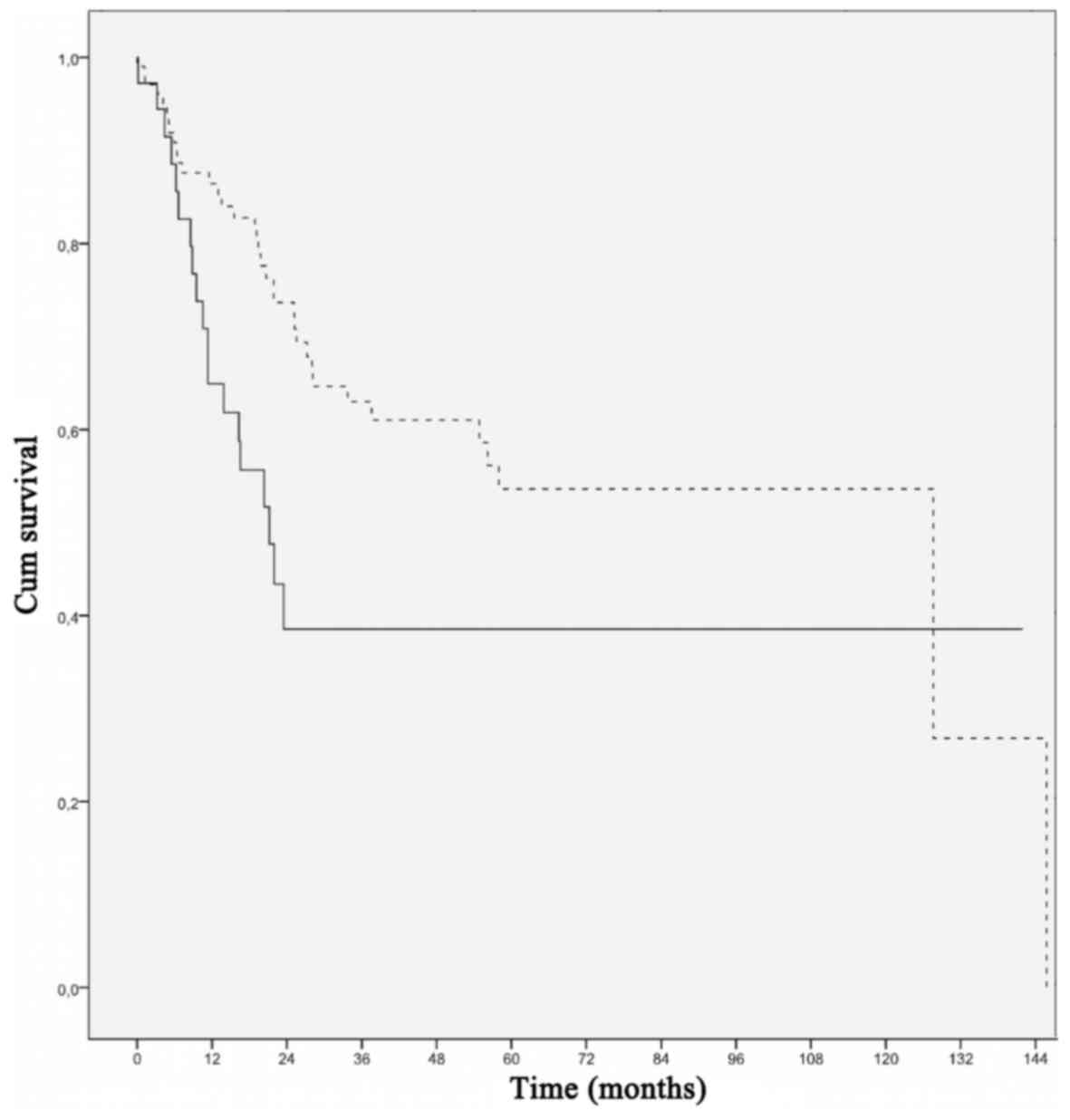|
1
|
Grivennikov SI, Greten FR and Karin M:
Immunity, inflammation, and cancer. Cell. 140:883–899. 2010.
View Article : Google Scholar : PubMed/NCBI
|
|
2
|
Seong MK: Prognostic inflammation score in
surgical patients with colorectal cancer. J Korean Med Sci.
30:1793–1799. 2015. View Article : Google Scholar : PubMed/NCBI
|
|
3
|
Bochen K, Krasowska A, Milaniuk S,
Kulczynska M, Prystupa A and Dzida G: Erythrocyte sedimentation
rate-an old marker with new applications. J Pre-Clin Clin Res.
5:50–55. 2011.
|
|
4
|
Sengupta S, Lohse CM, Cheville JC,
Leibovich BC, Thompson RH, Webster WS, Frank I, Zincke H, Blute ML
and Kwon ED: The preoperative erythrocyte sedimentation rate is an
independent prognostic factor in renal cell carcinoma. Cancer.
106:304–312. 2006. View Article : Google Scholar : PubMed/NCBI
|
|
5
|
Chen Z, Malhotra PS, Thomas GR, Ondrey FG,
Duffey DC, Smith CW, Enamorado I, Yeh NT, Kroog GS, Rudy S, et al:
Expression of proinflammatory and proangiogenic cytokines in
patients with head and neck cancer. Clin Cancer Res. 5:1369–1379.
1999.PubMed/NCBI
|
|
6
|
Choi ES, Kim HS and Han I: Elevated
preoperative systemic inflammatory markers predict poor outcome in
localized soft tissue sarcoma. Ann Surg Oncol. 21:778–785. 2014.
View Article : Google Scholar : PubMed/NCBI
|
|
7
|
Eboreime O, Atoe K and Idemudia JO:
Erythrocyte sedimentation rate and C-reactive protein levels in
breast cancer patients in Benin City, Nigeria. IOSR J Dent Med Sci.
14:116–119. 2015.
|
|
8
|
Strojnik T, Smigoc T and Lah TT:
Prognostic value of erythrocyte sedimentation rate and C-reactive
protein in the blood of patients with glioma. Anticancer Res.
34:339–347. 2014.PubMed/NCBI
|
|
9
|
Johansson JE, Sigurdsson T, Holmberg L and
Bergström R: Erythrocyte sedimentation rate as a tumor marker in
human prostatic cancer. An analysis of prognostic factors in 300
population-based consecutive cases. Cancer. 70:1556–1563. 1992.
View Article : Google Scholar : PubMed/NCBI
|
|
10
|
Heimdal K, Hannisdal E and Gundersen S:
Regression analyses of prognostic factors in metastatic malignant
melanoma. Eur J Cancer Clin Oncol. 25:1219–1223. 1989. View Article : Google Scholar : PubMed/NCBI
|
|
11
|
Deichmann M, Benner A, Bock M, Jäckel A,
Uhl K, Waldmann V and Näher H: S100-Beta, melanoma-inhibiting
activity, and lactate dehydrogenase discriminate progressive from
nonprogressive American Joint Committee on Cancer stage IV
melanoma. J Clin Oncol. 17:1891–1896. 1999. View Article : Google Scholar : PubMed/NCBI
|
|
12
|
Tas F, Ciftci R, Kilic L, Bilgin E, Keskin
S, Sen F, Yildiz I and Yasasever V: Clinical and prognostic
significance of coagulation assays in melanoma. Melanoma Res.
22:368–375. 2012. View Article : Google Scholar : PubMed/NCBI
|
|
13
|
Tas F, Karabulut S, Serilmez M, Yildiz I,
Sen F, Ciftci R and Duranyildiz D: Clinical significance of serum
M30 and M65 levels in melanoma. Melanoma Res. 23:390–395. 2013.
View Article : Google Scholar : PubMed/NCBI
|
|
14
|
Tas F, Karabulut S, Bilgin E, Tastekin D
and Duranyildiz D: Clinical significance of serum fibronectin and
vitronectin levels in melanoma patients. Melanoma Res. 24:475–479.
2014. View Article : Google Scholar : PubMed/NCBI
|
|
15
|
Tas F, Bilgin E, Erturk K and Duranyildiz
D: Clinical significance of serum claudin-1 levels in melanoma
patients. Melanoma Res. 26:377–381. 2016. View Article : Google Scholar : PubMed/NCBI
|
|
16
|
Westergren A: The technique of the red
cell sedimentation reaction. Am Rev Tuberc. 14:94–101. 1926.
|
|
17
|
ICSH recommendations for measurement of
erythrocyte sedimentation rate. International Council for
Standardization in Haematology (Expert Panel on Blood Rheology). J
Clin Pathol. 46:198–203. 1993. View Article : Google Scholar : PubMed/NCBI
|















